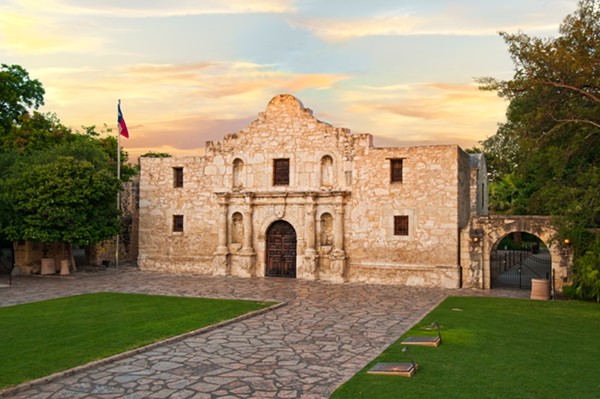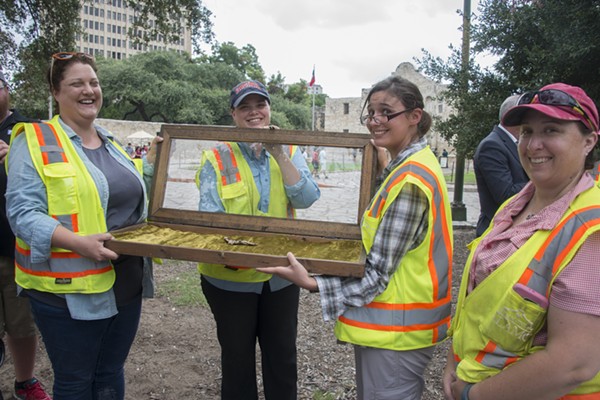The last thing the Alamo wants is to be forgotten. But with a past so complex — a blend of battles, burial grounds, buried treasure, and tall tales — it’s understandably hard to stay up to speed on its present and future. Just because the 18th Century mission is a historic relic doesn’t mean it’s cemented in time. The Alamo has continued to grow and adapt to educate, inspire and charm tourists and locals alike. Here’s what you need to know about its more recent past — and beyond.
For more than one hundred years, the Alamo mission was controlled by the Daughters of the Republic of Texas, a historical association formed to “perpetuate the memory of the founding families of the Republic of Texas.” But tensions between the organization and government officials strained over the years — sparked by officer elections, poor restoration, and unnecessary spending — ended in a state takeover not unlike the Alamo’s historic battle.
In 2011, the Texas General Land Office took control of the shrine in hopes of restoring the fragile 200-year-old chapel and neighboring barracks. DRT officials transitioned out of management positions, leaving just a few members behind to manage the DRT library (which ultimately closed last year).
Then, in 2015, the Alamo, along with the city’s four other historic Spanish colonial missions, was designated as a World Heritage Site by UNESCO (a Texas first). Perhaps coincidentally, the city and state began expediting its efforts to restore the delicate chapel and grounds — and tasked the Alamo Management Committee, a group of private and public sector officials, to fund and oversee a new restoration plan for the very old grounds.
Thus, the first draft of the sweeping Alamo master plan was presented to San Antonio City Council in December 2016. The hired planners based all recommendations off of one simple goal: for the Alamo to be just as revered as other historic U.S. battlefields, like Gettysburg or Valley Forge.
That meant shutting off part of the neighboring Alamo St. from traffic, getting rid of the touristy museums and shops lining Alamo St. and blocking the entire street in front of the mission off from traffic. No more sidewalk vendors, animated protests, or holiday decorations in front of the iconic chapel, either. Instead, the storefront and street — an area originally included in the mission grounds — would be filled in with memorial gardens, educational material, and plaques to commemorate the many Americans (native and otherwise) who lost their lives on the site.
The plan, only 60 percent unveiled to the public, is expected to include a museum to present artifacts found in and around the mission itself — including an odd wealth of items collected by musician and Alamo-enthusiast, Phil Collins.
Along with redesign, the committee has prioritized giving the site an expert excavation. Under the DRT’s eye, bright tourist shops and cemented streets popped up on top of the historic front-half of the Alamo grounds (the chapel originally sat in the center of the compound). Just last year, researchers with the Center for Archaeological Research with the University of Texas at San Antonio were given the green light to start digging around these areas, in hopes of finding, at the very least, remnants of the original outer wall. Now joined by a private archeology firm, site archeologists have remained zip-lipped about their findings thus far, but they predicted uncovering fragments of Native American pottery, battle tools, burial grounds, or other forgotten artifacts up to 10,000 years old. Who knows — they might even find a basement.
Of course, the seven-year master plan has hit a few financial roadblocks. Asking for a kick-start of some $100 million state and city funds, it doesn’t come as a surprise — but leaders are counting on public and private donors to come out of the woodwork.
“While some progress has been made over the last couple of years, the Alamo remains in a state of severe disrepair,” said state representative and House Speaker Joe Straus in a February interview with the San Antonio Express-News. “These state resources, along with local and private funds, will help transform the Alamo into the destination that it should be.”
Regardless of its timeframe, the groundwork has been laid to guarantee that the future of the Alamo is just as memorable as its past.



